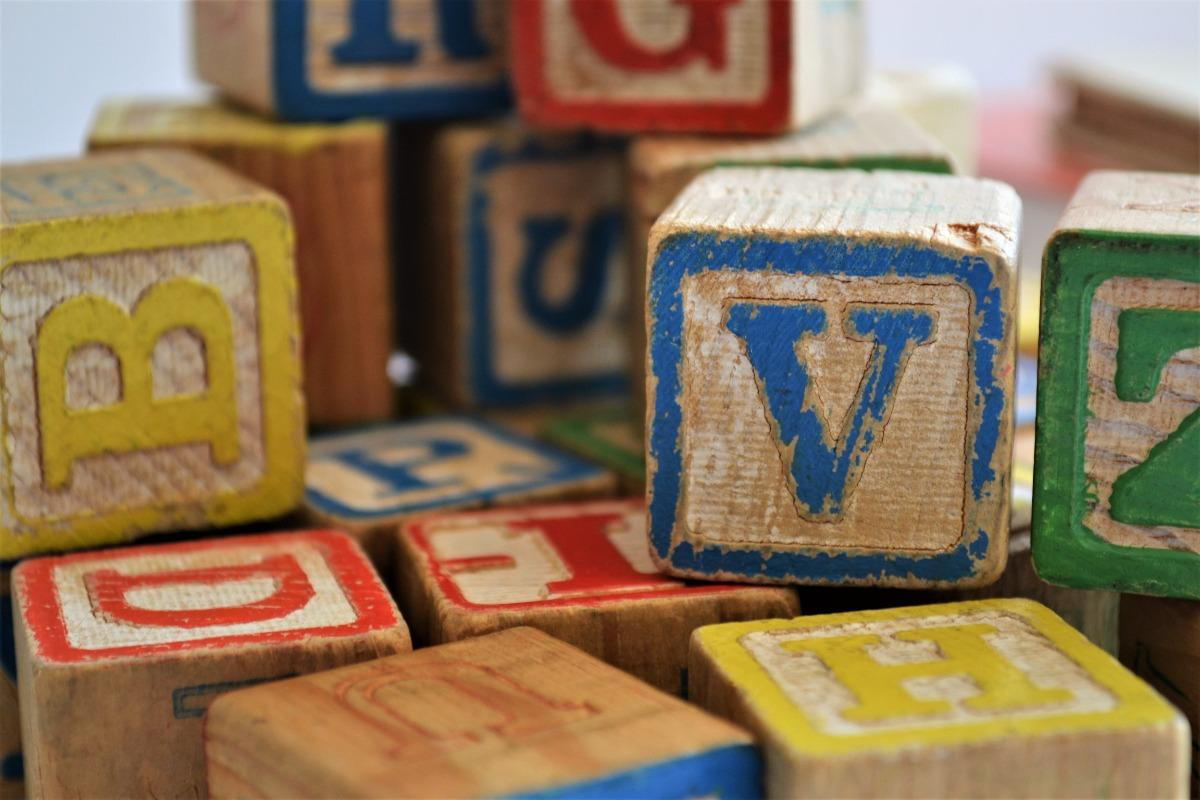
The preschool and elementary school age can be a fun and exciting time for parents. It can also be stressful and overwhelming. As a mother, I know, life can be complicated and chaotic. Recently, I contemplated my journey, finding a routine and chore system that could work for my children. I thought about my creations and re-creations, my pitfalls and successes during that period. I wanted to find a system that was not burdensome. I wanted to create a routine that fostered independence and autonomy. I needed a system that I could maintain consistently. Although I did not find the Holy Grail of systems, I found one that works for my children. I knew I needed to be mindful that as my children change, so will the system.
The System: Chore Box
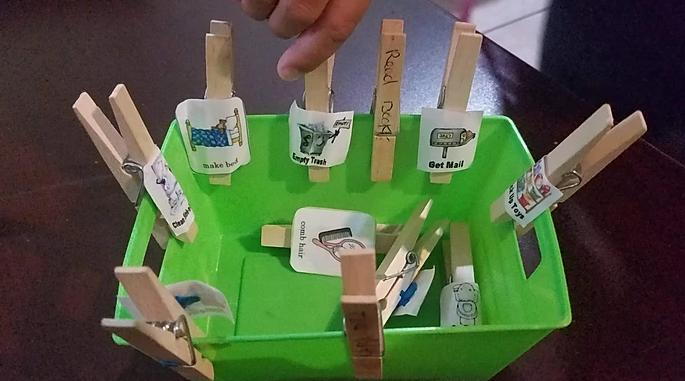
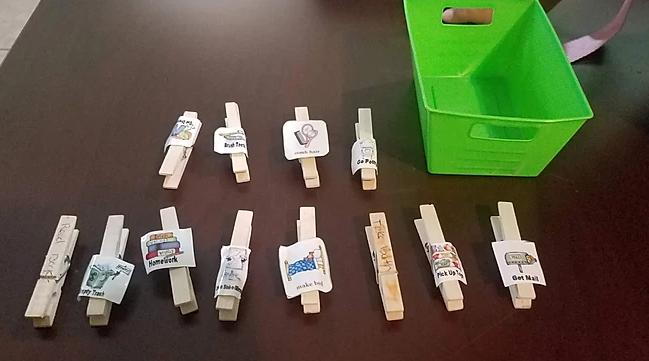
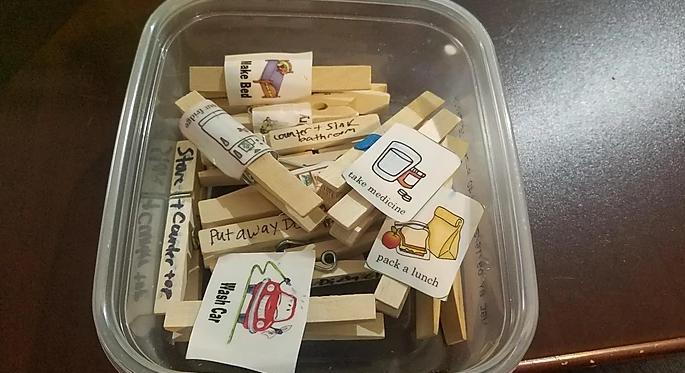
I started using this method two years ago for both my oldest and youngest child. My oldest used this system for one year and graduated to a new system. You can read about his system in a future blog post.
NOTE: As seen on the chore box system, some clips have handwritten chores. The handwritten chores promote reading skills.
Why Not Just Use a Store-Bought Chart?
No two children are exactly alike, so find what works for each of your children. I have owned at least four store-bought chore charts. I've used the following chore charts: Melissa & Doug, Sam's Club brand, Target’s chore charts, Walmart charts. My homemade version has worked best for my children because of the use of the checklist-style system. The system is in kinesthetic form and portable. They can carry it as they complete their work. For younger children, the use of clips supports fine motor skills, such as the pincer grasp. The pincer grasp can be practiced daily by using the pincer muscles as they clip and unclip the chores. The chore box is low maintenance in function and there is minimal writing and erasing. I can exchange clips as my child grows developmentally. Lastly, my child's enjoyment. My youngest enthusiastically enjoys clipping and unclipping the chores. My youngest displays a sense of pride when she sees she has accomplished. As you can imagine, this system boosts and supports positive self-esteem.
Materials:
1 small plastic box (I bought I believe a set of 3 from the Dollar Tree)
Clothespins
Chore Clip Art (I got these online for free)
Museum Wax/mold [tape, glue or glue gun works as well]
(However you decide to make them sturdy: laminating, printing on card stock etc)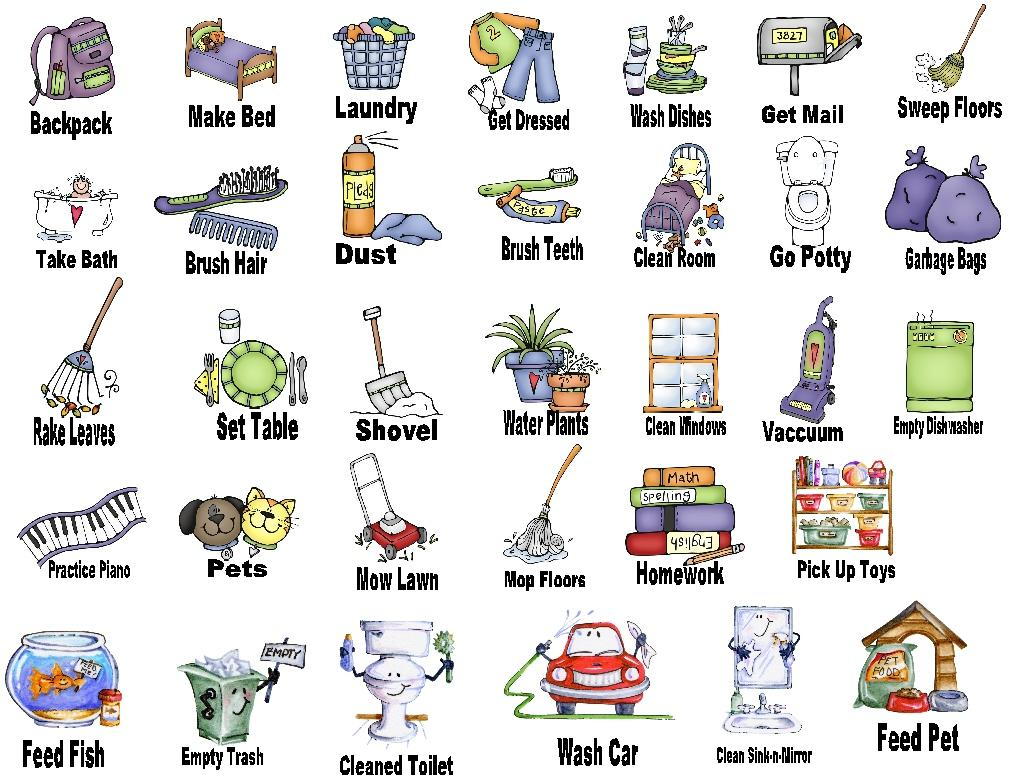
Age Appropriate Chore Guidelines
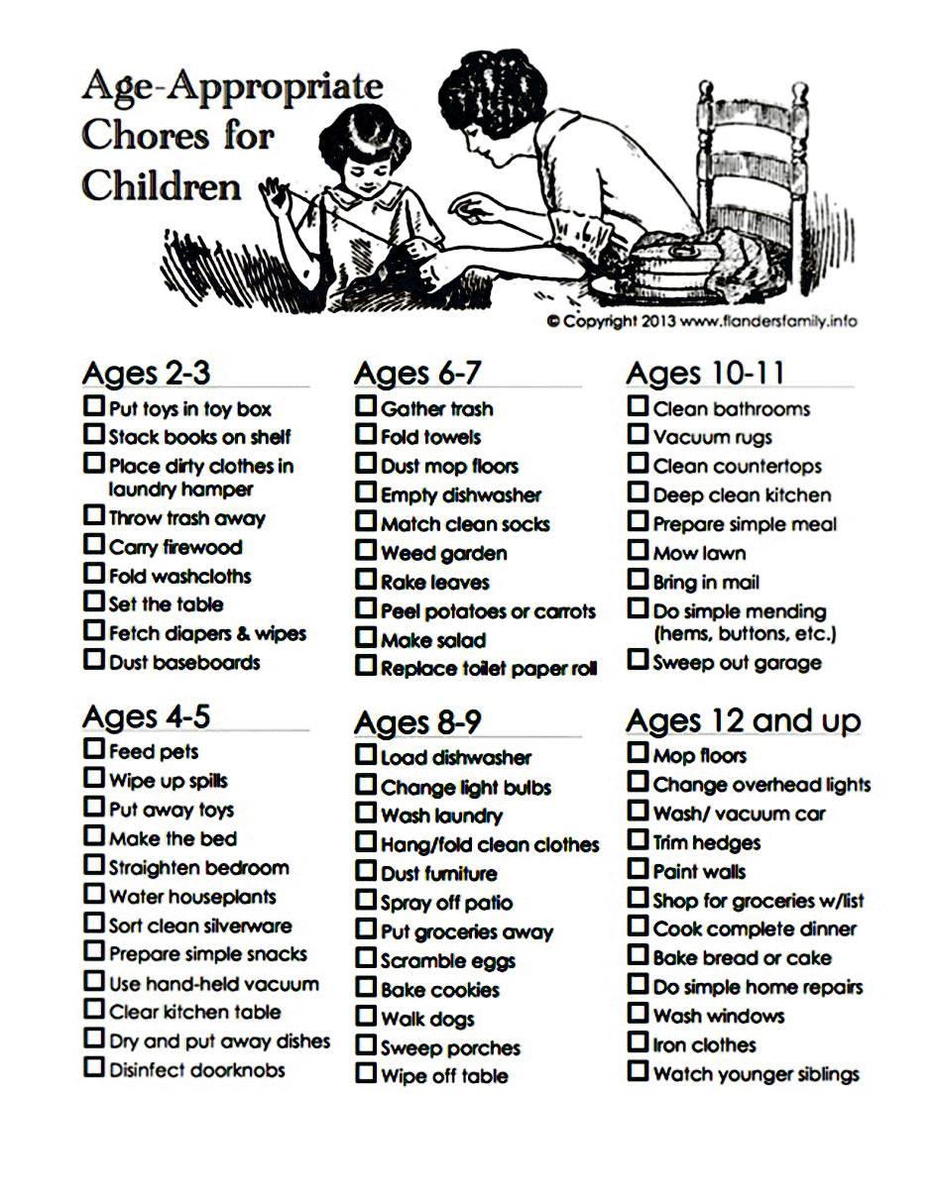 Chart courtesy of Fatherly.com
Chart courtesy of Fatherly.com
Abbreviated Social & Emotional and Cognitive Developmental Milestones (3-5 years old)
Note: After reviewing the milestones listed below, consider your child's developmental strengths and areas of growth. The list below is an abbreviated list. I invite you to explore your child's developmental milestones. Access full list from childmind.org by clicking the subtitle above.
Cognitive milestones
Approaches problems from a single point of view
Begins to have a clearer sense of time
Follows three-part commands
Recalls parts of a story
Understands the concept of same/different
Social and emotional milestones
Interested in new experiences
Cooperates with other children
Dresses and undresses
Negotiates solutions to conflicts
More independent
Views self as a whole person involving body, mind, and feelings
Often cannot distinguish between fantasy and reality
